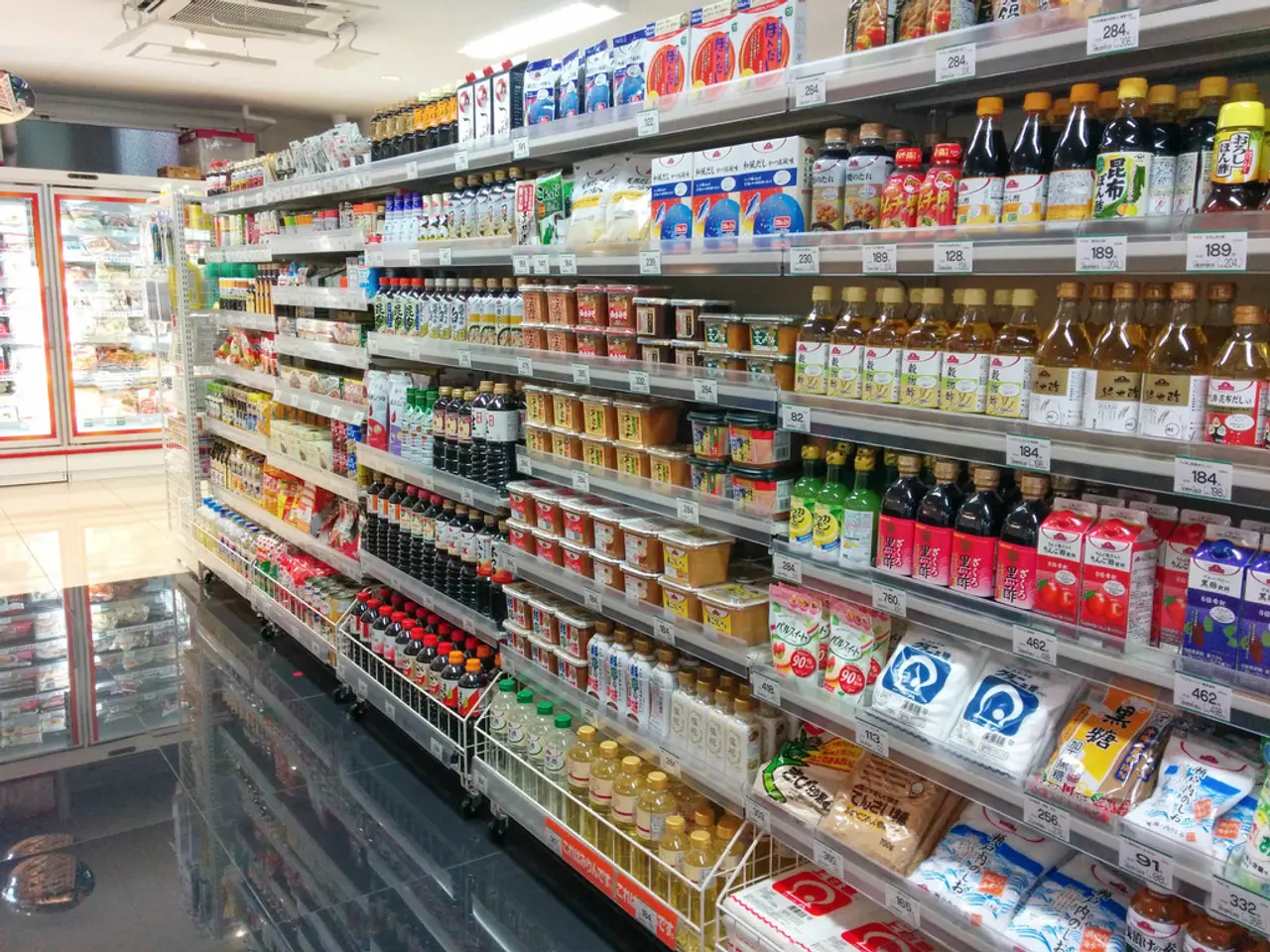Anticipated impact of increased tariff rates on American imports by the US government on consumers
The tariffs imposed by President Donald Trump have had a significant impact on the U.S. economy and consumers. These tariffs, intended to protect and revitalize domestic manufacturing, have generated substantial federal revenue and are claimed to strengthen the economy and bring manufacturing jobs back to the U.S. [1][2]
However, economic analysis suggests a negative impact on overall U.S. economic growth and labor markets. Real GDP growth is reduced by 0.5 percentage points annually in 2025 and 2026, with the U.S. economy settling 0.4% smaller in the long term, equivalent to about $115 billion per year. The unemployment rate is expected to rise by 0.4 percentage points by the end of 2025 and 0.7 points by end-2026, with payroll employment shrinking by approximately 500,000 jobs by year-end 2025. [1]
For consumers, tariffs usually result in higher prices on imported goods and domestic goods that rely on imported inputs. This can lower overall consumer purchasing power and increase costs of living. While precise consumer price impacts are not detailed in the current data, the policy aims to correct trade imbalances and promote fairness. However, it presents a trade-off with slower overall growth and job losses outside manufacturing. [1][2]
The tariffs have led to price increases in various sectors. The U.S. Commerce Department reported that prices rose 2.6% in June, up from an annual pace of 2.4% in May. [3] Some automakers have already raised prices to counteract tariffs, but for the most part, automakers haven't raised prices as they waited for details. [4] Companies may offer fewer discounts or drop products starting this fall because they're too expensive to produce due to tariffs. [5]
Prices for shoes are starting to go up for the back-to-school shopping season, with estimates in the 5% to 10% range. [6] The U.S. is implementing new tariffs on imported products starting August 7. [7] The Budget Lab at Yale estimates that prices will increase 1.8% in the short term due to the trade war. [1] European wine prices are expected to jump 30% in September due to tariffs. [8] Shoppers at stores like Tribeca Wine Merchants may see prices rise 20% to 25% starting from Friday due to tariffs and the declining value of the dollar. [9]
Notably, the European Union agreed to purchase $750 billion worth of natural gas, oil, and nuclear fuel from the U.S. over three years. [10] Vietnam agreed to purchase $2 billion in U.S. agricultural products over three years, including corn, wheat, and soybeans. [11] These agreements could potentially offset some of the negative impacts of the tariffs on the U.S. economy.
In summary, while tariffs under President Trump have contributed to increased manufacturing investment and government revenue, they have also led to slower GDP growth, higher unemployment, and sectoral shifts that negatively impact parts of the economy and potentially increase costs for U.S. consumers. [1][2]
- The tariffs imposed by President Donald Trump have led to price increases in various sectors, with estimates suggesting that shoes for the back-to-school shopping season may increase by 5% to 10%.
- The U.S. is implementing new tariffs on imported products starting August 7, which could potentially lead to increased prices for European wine, with estimates of a 30% jump in September.
- Some automakers have already raised prices to counteract tariffs, while companies may offer fewer discounts or drop products due to their increased production costs resulting from tariffs.
- The European Union agreed to purchase $750 billion worth of natural gas, oil, and nuclear fuel from the U.S. over three years, which could potentially offset some of the negative impacts of the tariffs on the U.S. economy.
- The tariffs' impact extends beyond the manufacturing industry to personal-finance, politics, and general-news, as they are contributing to slower GDP growth, higher unemployment, and potential increases in living costs for consumers.




